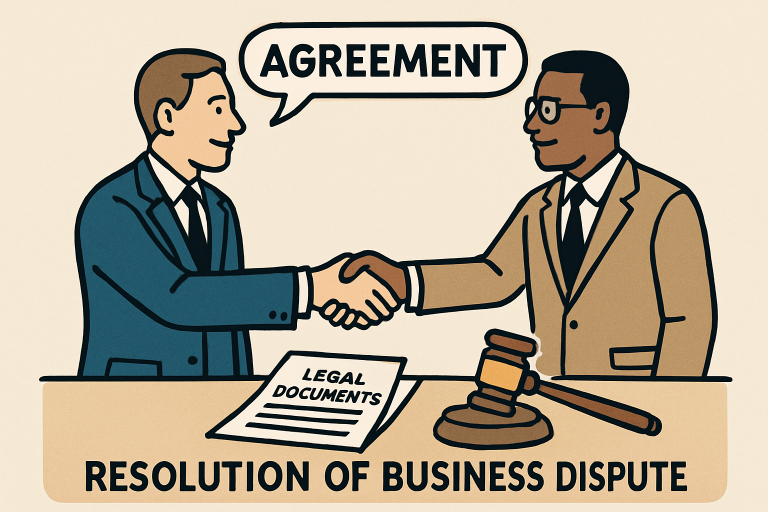Business litigation disputes can be costly, time-consuming, and potentially damaging to a company’s reputation if not handled effectively. Successfully navigating these conflicts requires strategic planning, clear communication, and a deep understanding of the legal landscape. Key strategies include thorough documentation, early assessment of risks, negotiation, and, when necessary, skilled representation in court. By approaching disputes proactively and with a structured plan, businesses can minimize financial loss, protect relationships, and achieve favorable outcomes. Understanding these strategies empowers companies to resolve conflicts efficiently while maintaining operational stability and long-term growth.
What Causes Business Litigation?
Business litigation frequently stems from various underlying causes, including contract breaches, partnership dissolutions, employment disputes, intellectual property conflicts, and shareholder disagreements. Because today’s commercial relationships are complex and frequently cross multiple industries and jurisdictions, seemingly minor misunderstandings can escalate into costly legal disputes. Proactive organization and clear documentation are key to reducing the likelihood and severity of such conflicts. For businesses seeking knowledgeable guidance from business law attorneys, expert legal support can make a significant difference in both preventing and resolving these conflicts efficiently.
Contract disputes continue to be the leading cause of commercial litigation in the United States. This is often due to ambiguities in contract terms or changing circumstances that render some agreements unclear or inapplicable. In many cases, disputes may arise from a failure to update documentation in line with changing business practices or regulatory environments, making proactive contract management critical to risk mitigation.
Proactive Steps for Prevention and Mitigation
Reducing business litigation risk starts with strong internal processes. Drafting detailed contracts with explicit terms, maintaining ongoing communication with partners and stakeholders, and instituting rigorous internal policies are foundational. Companies prioritizing legal risk assessments and regular contract reviews are far less likely to face severe litigation, as they address potential conflict points before escalating.
Employee education is critical—frequent training about legal and regulatory responsibilities empowers staff to spot and address issues early. Businesses that make preventative measures a routine part of operations often see reduced exposure and swifter resolution of internal disputes. For many organizations, legal audits and scheduled policy reviews have become essential in controlling risks and liabilities.
Choosing the Right Dispute Resolution Method
When business disputes emerge, the pathway to resolution is not limited to courtroom litigation. Selecting the right dispute resolution method can deliver substantial time and cost savings. Options like mediation, arbitration, and collaborative law each offer unique advantages. For instance, mediation encourages mutual understanding and can often preserve business relationships, while arbitration provides a more structured, private forum that can resolve matters faster than traditional court proceedings. Choosing the appropriate method depends on factors such as the complexity of the dispute, the willingness of parties to cooperate, and the desired level of confidentiality. Engaging experienced legal counsel early can help identify the most effective strategy and set realistic expectations. Clear communication throughout the process reduces misunderstandings and fosters a cooperative environment. Documenting agreements reached during resolution ensures enforceability and protects all parties involved. Businesses should also consider hybrid approaches, combining elements of different resolution methods to address specific needs. Ultimately, a proactive and informed approach increases the likelihood of a fair and efficient outcome.
Building a Strong Case: Gathering and Organizing Evidence
In any legal dispute, meticulously gathering and organizing evidence is essential to building a persuasive case. Supporting documents such as contracts, correspondence, financial statements, and meeting minutes should be centralized and accessible. Businesses with comprehensive records are better positioned to negotiate favorable settlements or succeed at trial. Thorough documentation has played a decisive role in the most recent commercial cases. Establishing a culture of organized record-keeping can provide lasting benefits and competitive advantages in potential litigation.
The Role of Third-Party Experts and Mediators
Complex litigation frequently involves topics outside the expertise of standard legal teams. Businesses can clarify highly technical aspects of their cases by engaging third-party experts—such as forensic accountants, technical specialists, or unbiased mediators—and achieve well-informed resolutions. Neutral mediation and expert testimony often expedite disputes, reduce the burden on internal teams, and increase the fairness of settlements. These professionals clarify where industry specifics or financial nuances could otherwise complicate or delay proceedings.
The Growing Role of Technology in Business Litigation
Technology is revolutionizing litigation management. With cloud-based case management tools, e-discovery systems, and sophisticated data analytics, businesses and their legal teams can process, review, and present evidence more efficiently. Firms that leverage these new platforms enjoy significant reductions in time and cost and improved collaboration among stakeholders. Investing in secure, modern document retention and review software helps organizations remain agile and responsive throughout all stages of a dispute.
Staying Informed on Legal Trends and Case Law
The legal landscape evolves rapidly, with new statutes, procedural updates, and landmark cases regularly influencing how business disputes are resolved. Ongoing professional development is essential for business leaders and legal professionals alike. Staying current can involve subscribing to respected industry newsletters, participating in webinars, and consulting regularly with experienced legal counsel. Proactively understanding legislative changes and court decisions helps businesses identify emerging risks and confidently seize new opportunities.
Step-by-Step: What to Expect During a Business Litigation Case
The litigation process involves several key phases, including pleading, discovery, pre-trial motions, trial, and post-trial. Pleading initiates the dispute with complaints and responses, while discovery involves collecting and exchanging information. Pre-trial motions aim to resolve issues or eliminate them before trial. The trial presents arguments and evidence, leading to a verdict. Post-trial, losing parties may appeal, or winners may initiate enforcement proceedings. Each phase has unique procedural and strategic considerations, necessitating close collaboration with legal counsel.
Conclusion: Effective Strategies for Navigating Disputes
Successfully resolving business litigation disputes demands a proactive, strategic approach. Companies should prioritize clear documentation, invest in the latest legal technologies, and remain vigilant about emerging legal trends and best practices. By leveraging expertise from business law attorneys and incorporating both traditional and innovative strategies, business leaders can safeguard their organizations, minimize risk, and achieve outcomes that protect their interests and sustain long-term success.


